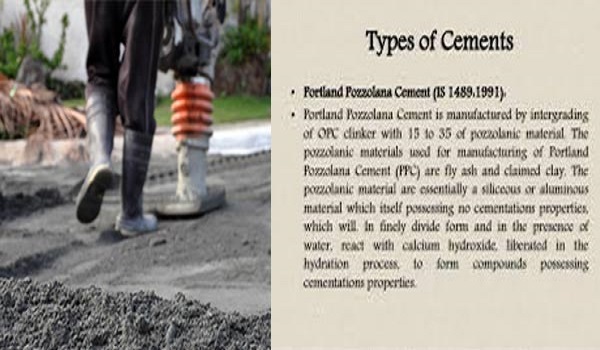Application and benefits of Portland Pozzolana Cement
Portland Pozzolana cement is produced by synthesizing OPC cement with pozzolanic materials in a specific ratio. It is generally called as PPC cement.
A pozzolanic may be a natural or artificial material that comprises of silica and aluminous in a reactive form. Generally, there is no cementitious properties in this material, but if it is blended with water or moisture or lime to have reaction with calcium hydroxide to develop compounds with cement properties.
The pozzolana materials are categorized as follow :
- Artificial pozzolana - It includes fly ash, silica fume, rice husk, blast furnace slag.
- Natural pozzolana - It contains Burnt clay, pumicite, diatomaceous Earth.
How Portland pozzolana cement is formed
- The limestone (CaCO2) and clay (SiO2,AI2,O3,Fe2O3) are considered as the main raw materials for developing this type of cement.
- Rocks are filled into trucks and conveyed to the crushers to mash them into fine particles.
- Fine particles made of clay and limestone are supplied into the air-swept ball mills in proper ratios based on your need and blended properly prior to send it to silos for storing.
- This mixture is then pre-heated upto 800-1000c temperature where calcinations of CACO3 to CaO occurs.
- The mixture heated earlier is then transferred to kiln where the mixture is heated to 1450 C in rotary Kiln. The modules which are produced during the burning process known as clinker. With the help of a rotary cooler the clinker is chilled.
- This clinker is now amalgamated with gypsum and pozzolana materials in the desired ratio and in this way the Portland Pozzolana Cement is formed.
Properties of Portland Pozzolana Cement
- Initial setting time = 30 min (minimum)
- Final setting time = 600 min (maximum)
- At 3 days 13MPa (minimum)
- At 7 days 22 MPa (minimum)
- At 28 days 33 MPa (minimum
- Drying shrinkage should not be in excess of 0.15%
- Fineness should not be below 300 m2/kg
- Preliminary strength of PPC is fewer but final strength is equivalent to the 28 days strength of OPC
- PPC contains lower rate of development of strength as compared to OPC
Applications of Portland Pozzolana Cement
- It is effective for hydraulic structures, marine structures, construction adjacent to the sea shore, dam construction etc.
- It is suitable for pre-stressed and post-tensioned concrete members.
- It is also applied in masonry mortars and plastering.
- Since it comes with superior surface finish, it is utilized in decorative and art structures.
- It is employed in developing precast sewage pipes.
- It is suitable for rough concreting conditions.
Benefits of Portland Pozzolana Cement
- It to a sustainable cement product since the material utilized for cement production are consisted of natural recycled waste.
- As it is very fine cement, it is mostly recognized for plastering works.
- Pozzolano comprises of silica material for which it becomes inexpensive and as a result the cost of the cement is also reduced. Thus, it is considered as very reasonable for application.
- Pozzolana cement is very strong in withstanding sulphate attack and for this reason, it is mostly applied in hydraulic structures, marine structures, construction adjacent to the sea shore, dam construction etc.
- PPC is employed in pre-stressed and post-tensioned concrete members.
- It minimizes the discharge of carbon monoxide from the concrete, thus it becomes eco-friendly.
- Due to fine quality, pozzolano materials can seal gaps among the reinforcement and aggregate, thus the shrinkage as well as is honeycomb development and bleeding are decreased, which consecutively enhance the strength and longevity of concrete.

